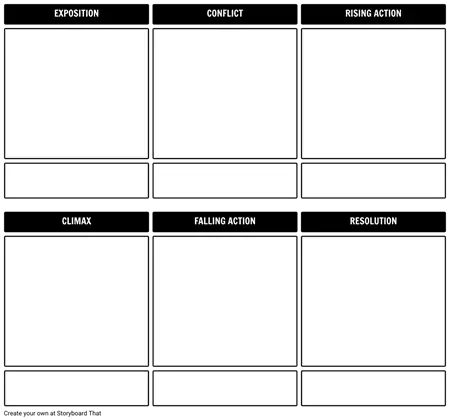Prewriting with Storyboards

When it comes to organizing thoughts, it can be a hassle to keep characters, scenes, and ideas in a cohesive and understandable manner. Managing these assets usually involves an ad hoc collection of word documents, physical folders, and mental notes. This is where visually representing those ideas can help you stay structured. And what better visual organizer than storyboards?
Storyboards are the perfect blend of visuals and text. The complementary properties of each media convey information the other struggles with. For script writing, novels, and making other detailed plots, storyboards are great for sorting information. Let’s take a look at key pieces of scripts/manuscripts, and the advantages of using storyboards.
Characters
Stories are driven by characters, presenting human emotions and actions in the context of events. When these characters are the focus of a plot, they must be rich and well developed to ensure a strong connection with the audience.
The number of characters in a story may depend on the length and style of the piece, but it is always important for each character to fulfill their role. They should have the appropriate characteristics and personalities to advance the plot.
A character map helps flesh out these characters. It illustrates their position, positive traits, flaws, and other defining features that enhances their part.
Example

Try out the template on your own story. You can use our provided characters on our storyboard creator, or upload images of your actors or drawings.

Setting: Locations and Time Period
The location of your story can sometimes be just as influential as your characters. Where and when your story takes place will affect culture, technology, behavior, and many other aspects of the plot. A story that takes place in the Wild West, and one that takes place in the future would probably vary a great deal in the attitudes, architecture, and cultures that are portrayed.
Use storyboards to lay out the scenes of your story, and describe how their settings affects the plot. For example:

Use this template to create a visual representation of the scenes and key locations in your script. Just add additional cells, as needed, for more locations.

Plot Diagram
A “plot plan” helps make a story succinct and believable. Whether used to organize before writing, or to check for logical progression later, creating plot documentation can prove valuable. Recording the plot progression ensures each necessary arc is achieved:
- Exposition
- Rising Action
- Conflict
- Climax
- Falling Action
- Resolution
Of course, your story may have multiple conflicts and rising actions. Create your board accordingly, and don’t feel limited by the template below. Read more about plot diagrams and their uses if you need a refresher.
Theme and Messages
Theme and overarching messages are common in stories, and often the inspiration for their creation. These are the things that you want your audience to take away after viewing or reading your work. Common themes include love, friendship, family, overcoming odds, and courage. The theme/message of your story may be completely different. It is good to know what you are trying to portray, so you can ensure the character actions and plot points in your script track and express this theme.
For a more in-depth look at theme and famous stories, visit our themes article.
Next Steps
Now that you have learned how storyboarding can help scripting and planning for a film or novel, it is time to try it with your own work. Use the templates provided above, and see how much easier it becomes to work with and reference your story. Then check out our other articles to help storyboard your ideas:
- Overview of Storyboarding for Film, Commercials, and Animation
- Camera Shots
- Make your Storyboards Pop!
- Character Posing
- Layout and Efficiency
Have a suggestion you’d like to see for film-related storyboarding articles? Let us know at Feedback@StoryboardThat.com. Happy storyboarding!
© 2025 - Clever Prototypes, LLC - All rights reserved.
StoryboardThat is a trademark of Clever Prototypes, LLC, and Registered in U.S. Patent and Trademark Office


